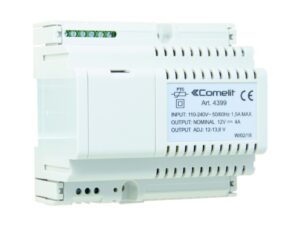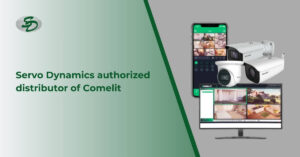Consulting, News
What is CCTV? Classification and Applications
Surveillance camera systems (CCTV) play a crucial role in ensuring the safety of people and property. This article provides a comprehensive overview of CCTV, including its concept, detailed classifications, and practical applications in daily life.
What is CCTV?

CCTV stands for Closed Circuit Television, commonly known as surveillance cameras. CCTV functions to record and process images and videos captured in a specific area and then transmit them to a monitoring screen for user access and observation. Unlike public broadcasting television, CCTV signals are only transmitted to a designated set of monitoring screens. This system plays a crucial role in security, crime prevention, and monitoring activities across various fields.
What is a CCTV Camera?
CCTV Camera, also known as a surveillance camera, is the core device in a CCTV system responsible for capturing images and videos from the surrounding environment. These images are then converted into electronic signals and transmitted to other devices such as recorders and monitoring screens. With continuous operation capabilities, CCTV cameras are essential for security surveillance, crime prevention, and providing evidence when necessary.
What is a CCTV System?
A CCTV system is a network of closed-circuit video surveillance devices designed to record and transmit images and videos from monitored areas. This system includes cameras, digital video recorders (DVR/NVR), monitoring screens, and other auxiliary devices that work together to provide continuous and effective surveillance.
Types of CCTV Systems

CCTV systems can be classified in various ways, depending on technology, signal transmission methods, and applications. Choosing the right CCTV system depends on surveillance needs, installation conditions, and budget. Below are some common classifications:
By Signal Transmission Method:
- Wired CCTV System: Uses coaxial cables or network cables to transmit video signals. Advantages include stable signals, minimal interference, and high security. The downside is complex installation and high cabling costs.
- Wireless CCTV System: Uses Wi-Fi or other wireless technologies for signal transmission. Advantages include easy installation, flexibility, and cost savings on cables. Disadvantages include potential signal interference and limited transmission distance.
By Image Technology:
- Analog Camera: Uses analog signals to transmit images. Advantages include low cost and easy installation. However, image quality is not high, and it is prone to interference.
- IP (Internet Protocol) Camera: Uses digital signals and transmits data over an IP network. Advantages include high image quality, smart features, and easy system expansion. The downside is a higher cost compared to analog cameras.
- Wi-Fi Camera: Transmits signals via Wi-Fi. Advantages include simple installation and aesthetic appeal. The downside is that performance depends on Wi-Fi stability, which may affect reliability.
Example: Comelit Camera provides a comprehensive video surveillance solution, ranging from traditional analog solutions to enhanced HD (AHD series) and advanced digital IP solutions that leverage internet transmission benefits.
By Function and Design:
- Fixed Camera: Monitors a fixed area without movement capabilities.
- PTZ (Pan-Tilt-Zoom) Camera: Allows movement in horizontal and vertical directions with zoom functionality.
- Infrared Camera: Enables night vision or low-light condition monitoring.
- Dome Camera: Designed in a dome shape, typically installed indoors.
- Bullet Camera: Cylindrical-shaped, commonly used for outdoor installations.
Components of CCTV Camera System

A CCTV system consists of several key components that work together to capture, transmit, and display video footage. Below is a detailed breakdown of a typical CCTV system:
Camera (Surveillance Camera):
- This is the core component of the system, responsible for capturing images or video from the monitored area.
- There are various types of cameras, including fixed cameras, PTZ (Pan-Tilt-Zoom) cameras, infrared cameras, and IP cameras, each with its own features and applications.
Video Recorder (DVR/NVR):
- The video recorder processes and stores video data from the cameras.
- DVR (Digital Video Recorder) is used for analog cameras, while NVR (Network Video Recorder) is used for IP cameras.
- The recorder allows users to watch live feeds, review footage, and manage recorded videos.
Storage Hard Drive:
- This is where recorded video data is stored.
- The hard drive capacity determines the length of video storage.
Monitoring Screen:
- Displays live video from cameras or recorded footage.
- The screen can be a TV, computer monitor, or a specialized CCTV display.
Connection Cables:
- Used to transmit video signals and power between devices.
- There are two main types: coaxial cables (for analog cameras) and network cables (for IP cameras).
Power Supply:
- The CCTV system requires power to operate.
- Power can come from a direct electrical source or a backup power supply (UPS).
Auxiliary Devices (Optional):
- Auxiliary devices include signal splitters, signal amplifiers, signal converters, etc., which enhance system performance and expand capabilities.
- Network devices such as modems, routers, and switches if it is an IP camera system.
Benefits of CCTV Camera Systems
- Crime Prevention: The presence of CCTV cameras creates a strong psychological deterrent, preventing potential criminal activities.
- Evidence Collection: In case of incidents, CCTV cameras provide images and videos as reliable evidence, assisting in investigations and case resolutions effectively.
- Continuous Surveillance: CCTV systems operate 24/7, ensuring no surveillance gaps. This is particularly crucial for asset and personal protection at night or during off-hours.
- Asset Protection: CCTV helps safeguard assets from theft and vandalism. In business establishments, it also assists in inventory management and fraud prevention.
- Safety Assurance: CCTV is used to monitor hazardous areas, ensuring workplace safety and accident prevention. At home, it helps keep an eye on children and the elderly.
- Traffic Monitoring: CCTV is a valuable tool for monitoring and regulating traffic. Cameras capture vehicle footage, help detect violations, and reduce accidents.
How do CCTV Systems work?

CCTV surveillance cameras operate in a continuous cycle, from capturing images to displaying and storing them. Below is a detailed description of how they work:
1. Image Capture:
Lens and Sensor:
- Light from the surrounding environment enters the camera through the lens.
- The lens focuses the light onto an image sensor (typically CCD or CMOS).
- The image sensor converts the light into electronic signals.
Initial Image Processing: The electronic signals from the sensor are processed to enhance image quality, including brightness, contrast, and color adjustments.
2. Signal Transmission:
Analog Cameras: The analog video signal is transmitted via coaxial cables to a Digital Video Recorder (DVR).
IP Cameras:
- The video signal is digitized and transmitted over an IP (Internet Protocol) network to a Network Video Recorder (NVR).
- This allows image transmission over the internet or a local area network (LAN).
3. Processing and Storage:
DVR/NVR (Digital/Network Video Recorder):
- The recorder receives video signals, processes, and compresses them for storage.
- Video data is stored on a hard drive or other storage devices.
- The recorder also allows users to view live footage or replay recorded videos.
4. Image Display:
Monitoring Screen:
- Images from the recorder are displayed on the monitoring screen.
- Users can view live or replay stored footage.
Remote Viewing: With IP cameras, users can access live footage remotely via mobile devices (smartphones, tablets) or internet-connected computers.
Applications of CCTV Systems

CCTV systems are becoming increasingly popular and are widely used across various sectors of life:
Home Security:
- Monitor homes, gardens, garages, and detect and prevent theft or intrusion.
- Supervise children, the elderly, and housekeepers, ensuring safety for family members.
Business Security:
- Monitor offices, factories, and warehouses to prevent theft, fraud, and vandalism.
- Track employee activities, customer interactions, access control, and attendance tracking.
- Oversee production lines to ensure product quality.
Public Security:
- Monitor traffic, detect violations, oversee public areas, and prevent crimes.
- Supervise large-scale events to maintain order and assist in criminal investigations.
Traffic Surveillance:
- Monitor traffic conditions, detect congestion, record violations, and issue remote fines.
- Observe accident-prone areas, minimize incidents, and assist in traffic signal control.
Industrial Monitoring:
- Monitor production lines to ensure product quality and oversee hazardous areas for worker safety.
- Supervise warehouses, manage inventory, and oversee automated processes.
Retail Surveillance:
- Monitor customers to prevent shoplifting and track employee performance.
- Analyze customer behavior to enhance services and manage stock levels.
Healthcare Monitoring:
- Supervise patients, especially those requiring special attention, and monitor sensitive areas for security.
- Oversee surgical procedures for safety and monitor laboratories for biosecurity.
Education Sector Monitoring: Monitor classrooms for discipline and oversee common areas within schools for security.
How to install CCTV at home?
Installing a surveillance camera at home is not too complicated if you follow the basic steps. Below is a detailed guide to help you set up your system easily:
Step 1: Determine Installation Locations
- Identify key areas to monitor (entrances, gardens, living rooms, etc.).
- Choose installation points that offer a wide viewing angle covering essential areas.
- Avoid placing cameras against bright light sources or in obstructed positions.
- For Wi-Fi cameras, ensure they are within the Wi-Fi coverage range.
Step 2: Install the Camera
Wi-Fi Cameras:
- Mount the camera base on a wall or ceiling using screws.
- Connect the camera to a power source.
- Download the camera management app on your phone and link the camera to the Wi-Fi network.
Wired Cameras:
- Drill holes in the wall or ceiling to route cables.
- Secure the camera to the wall or ceiling using screws.
- Connect the camera cables to the DVR (Digital Video Recorder).
- Provide power to the camera.
Step 3: Connect and Configure the System
Wi-Fi Cameras:
- Open the camera management app on your phone to view the live feed.
- Set up features like recording, alerts, and video playback.
Wired Cameras:
- Connect the DVR to a monitor.
- Configure settings for the DVR and cameras.
- Check the video feed and adjust the camera angles as needed.
Popular CCTV camera brands
Comelit
Comelit is a renowned Italian brand known for its elegant and sophisticated designs in security and building automation solutions. Comelit’s CCTV products are highly regarded for their exceptional quality, integration of advanced technology, and strong presence in the European market.
All Comelit products comply with NDAA and GDPR standards. Additionally, Comelit’s cameras and recorders are ONVIF (Open Network Video Interface Forum) compliant, ensuring compatibility with products from other manufacturers.
Bosch Security Systems
Bosch Security Systems is a trusted brand offering comprehensive security solutions, including surveillance cameras, alarm systems, access control, and public address systems. Known for their high-quality, durable products, Bosch integrates intelligent features into its security solutions.
Hikvision
Hikvision is one of the world’s largest manufacturers of surveillance cameras, offering a diverse range of products catering to both residential and commercial needs. The brand is known for its superior image quality, competitive pricing, and integration of smart technologies.
Dahua
Dahua is a leading provider of video surveillance solutions, specializing in security cameras and comprehensive security systems. The company focuses on developing advanced AI technologies, delivering products with intelligent image analysis and facial recognition capabilities.
Panasonic
Panasonic, a longstanding electronics brand, provides high-quality surveillance cameras, particularly in the professional IP camera segment. Panasonic products are renowned for their durability, reliability, and ability to function efficiently in various environmental conditions.
Servo Dynamics – Official Distributor of Comelit in Vietnam

Servo Dynamics is proud to be the official distributor of Comelit in Vietnam, offering genuine high-quality products and solutions. Our team of experienced technicians is extensively trained in Comelit products, ensuring comprehensive support for customers in consultation, installation, and maintenance.
Contact us now for expert advice and support!
Explore Comelit Products
Learn More

 Tiếng Việt
Tiếng Việt












